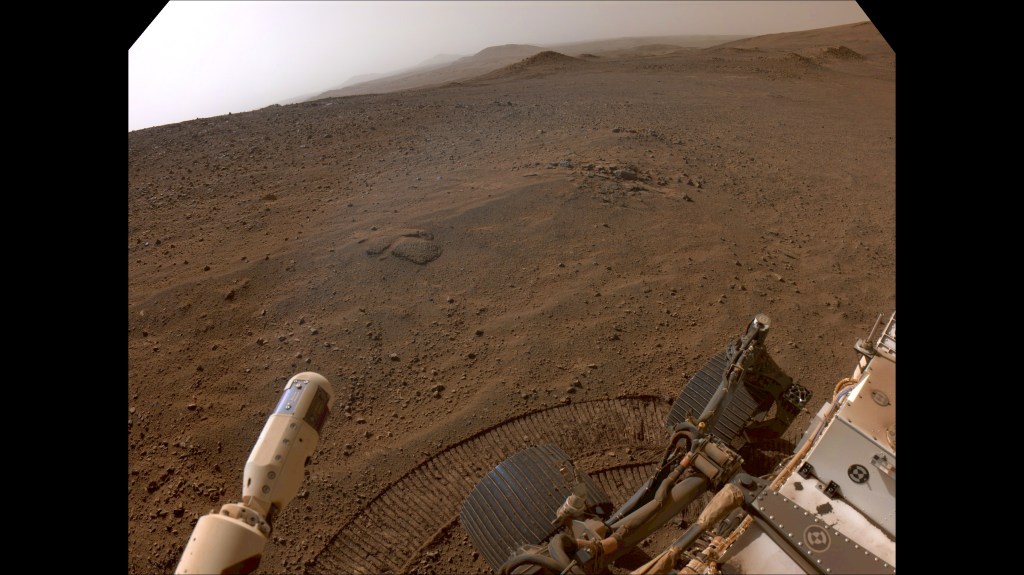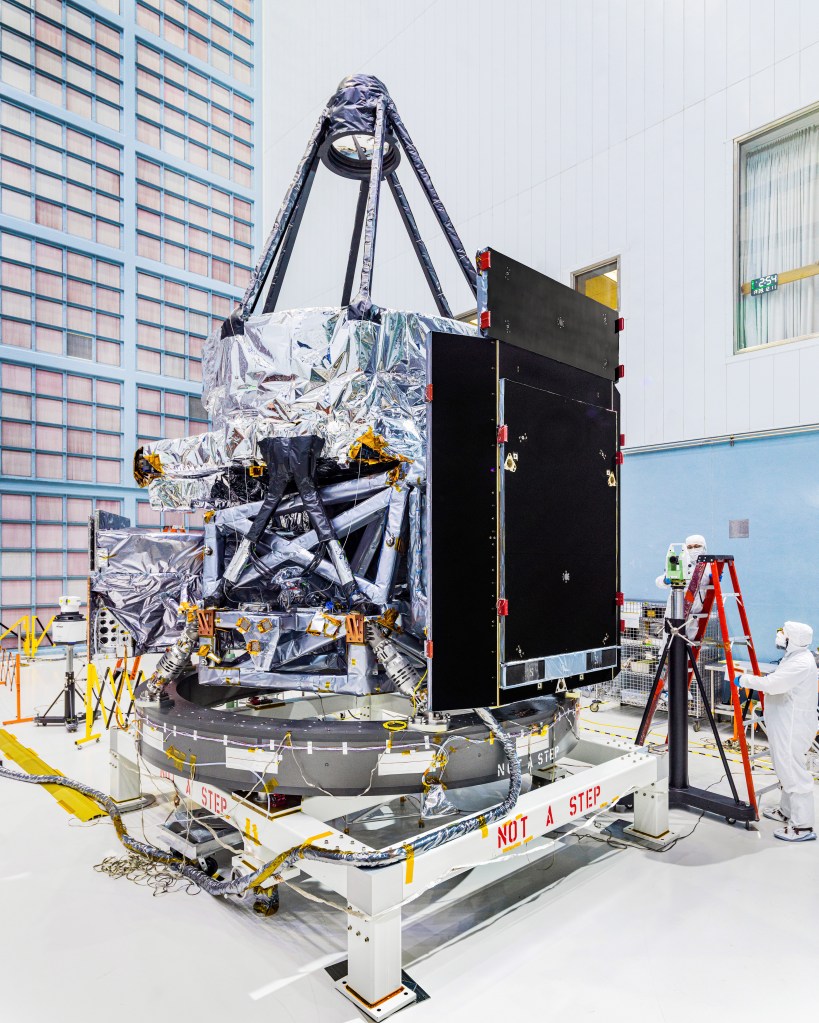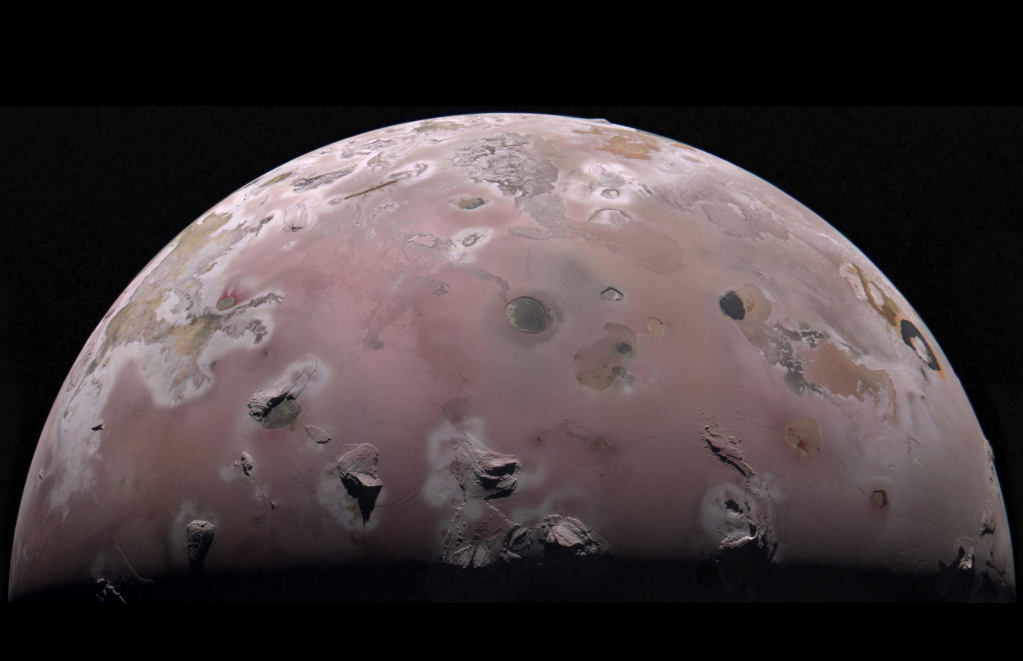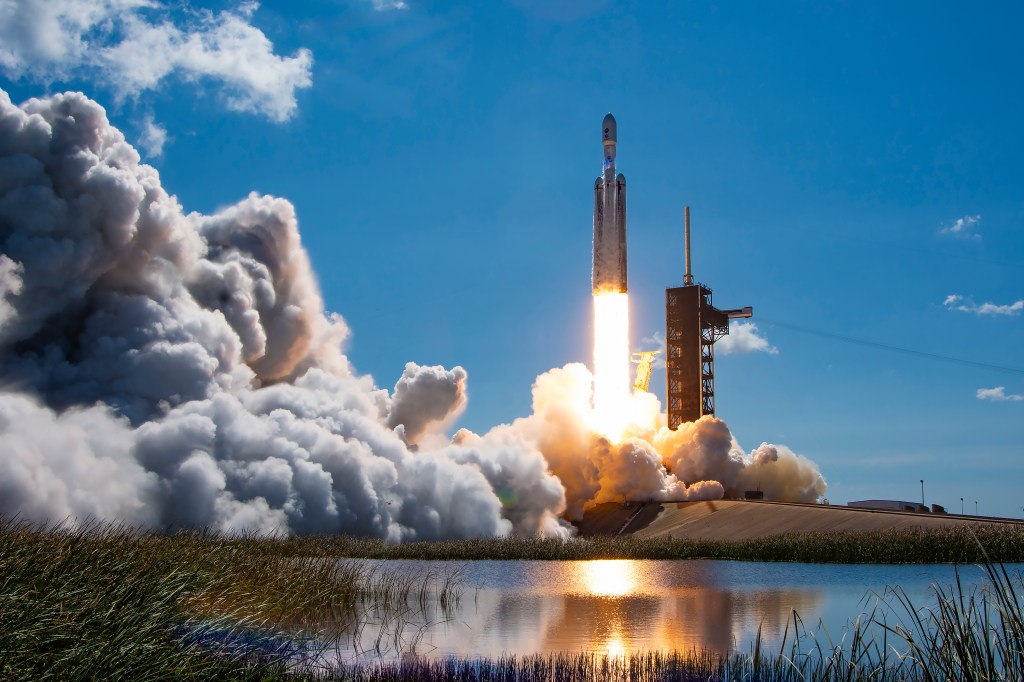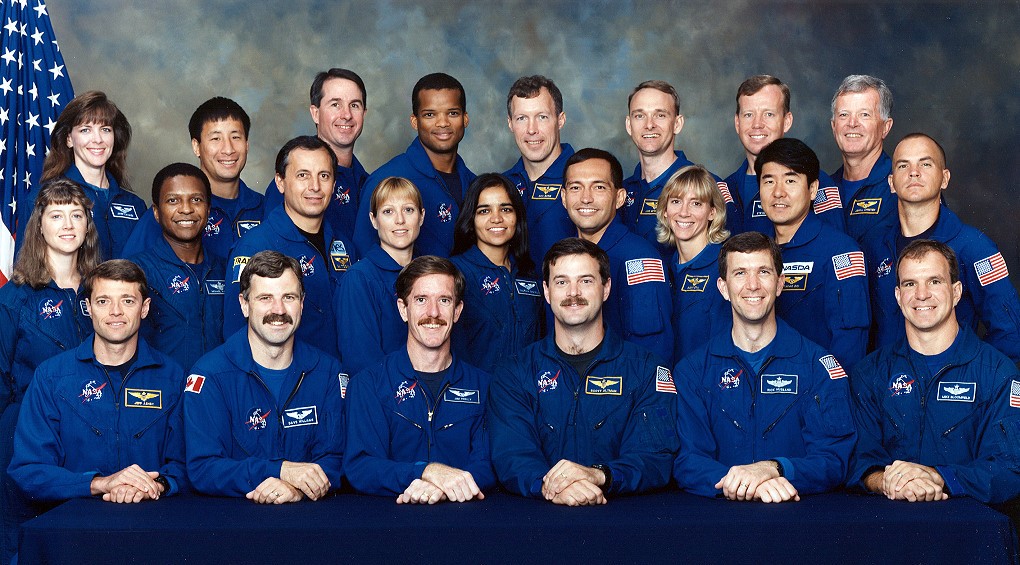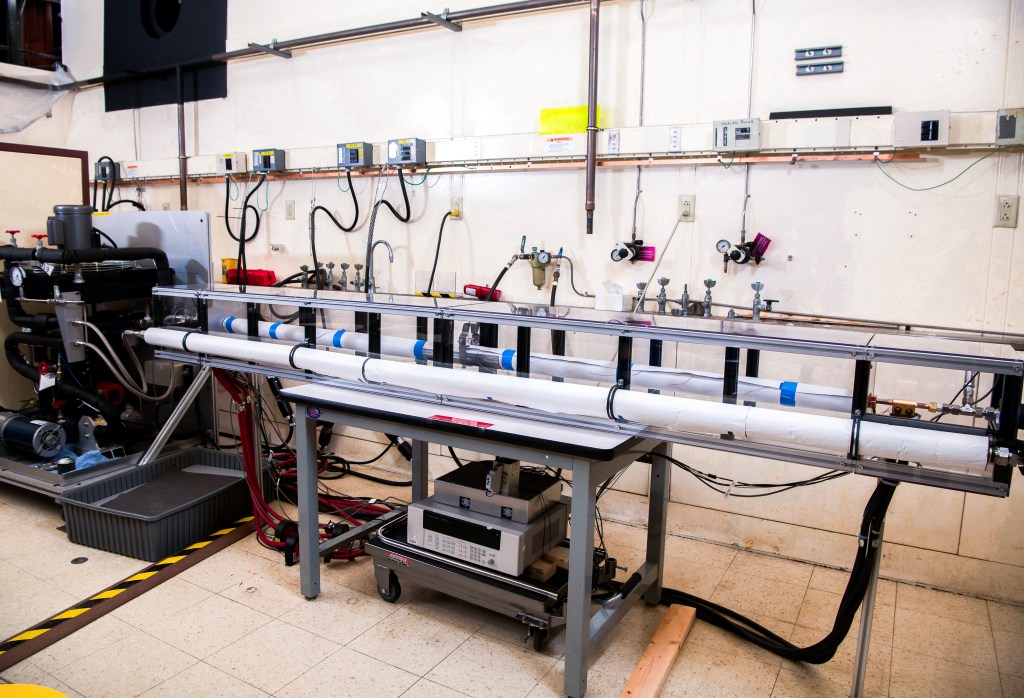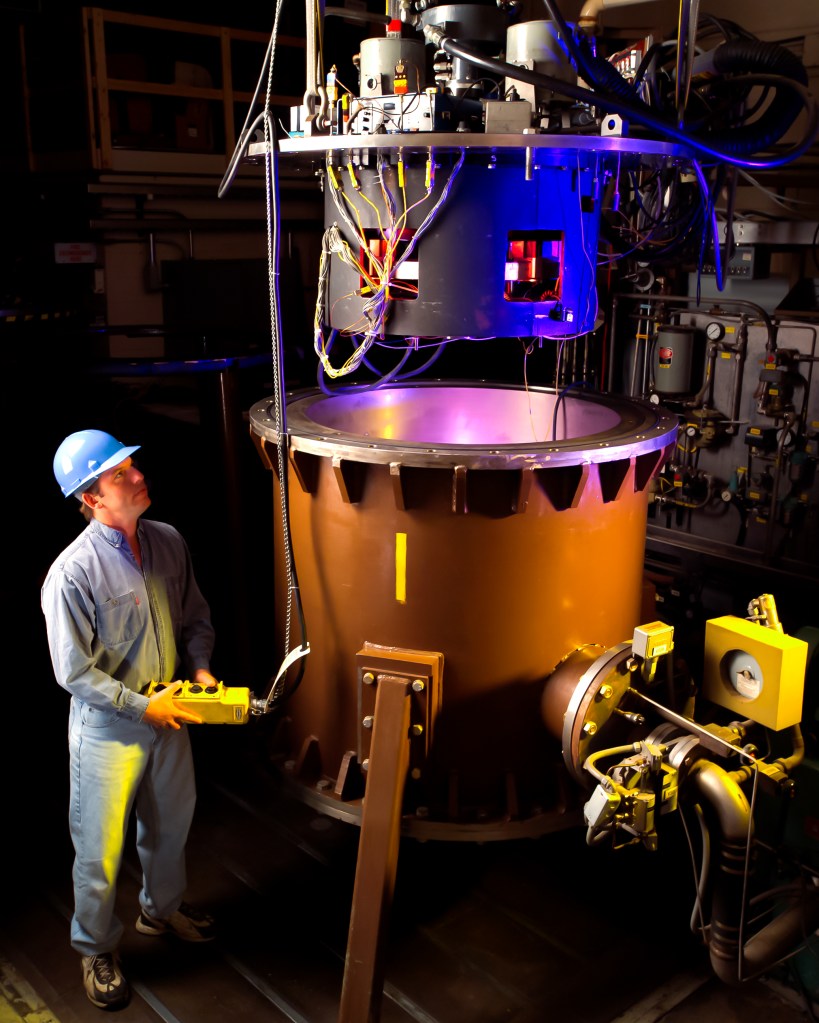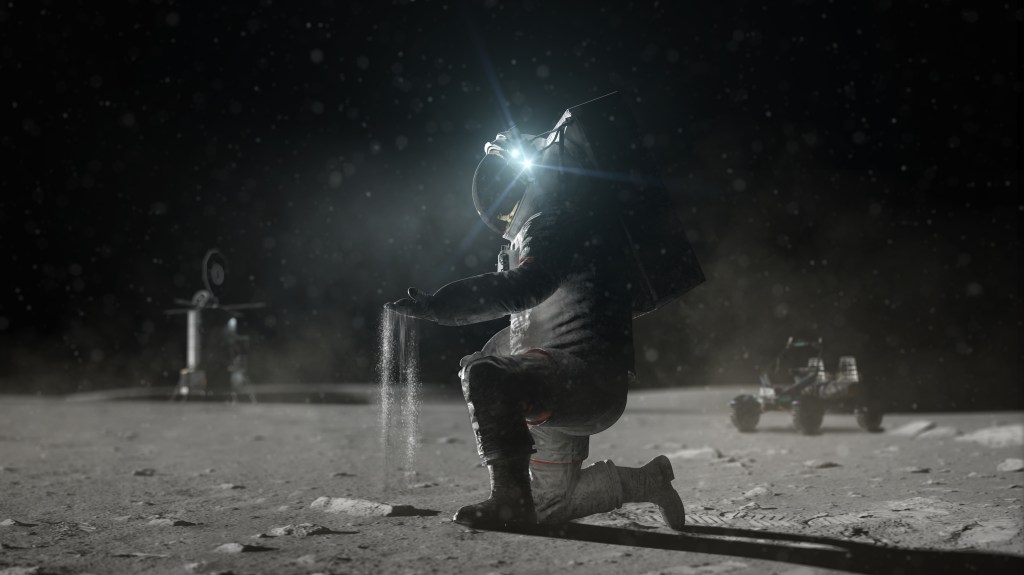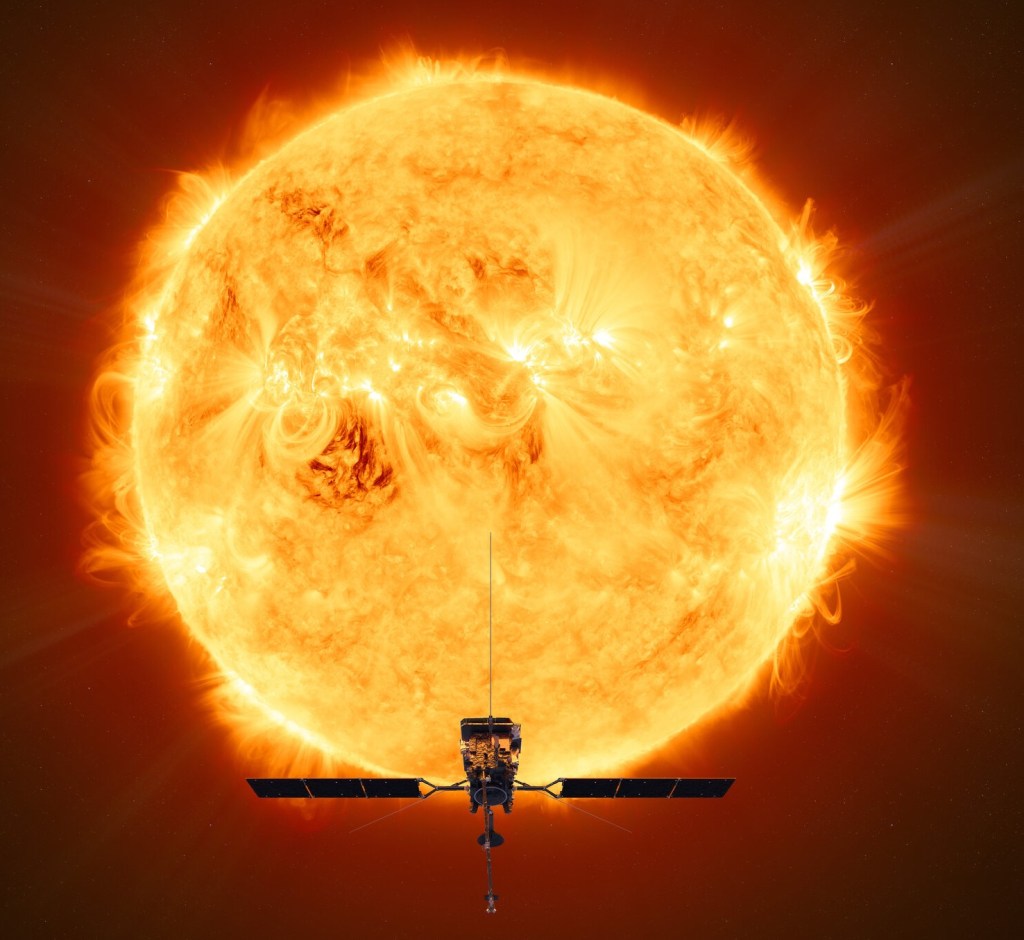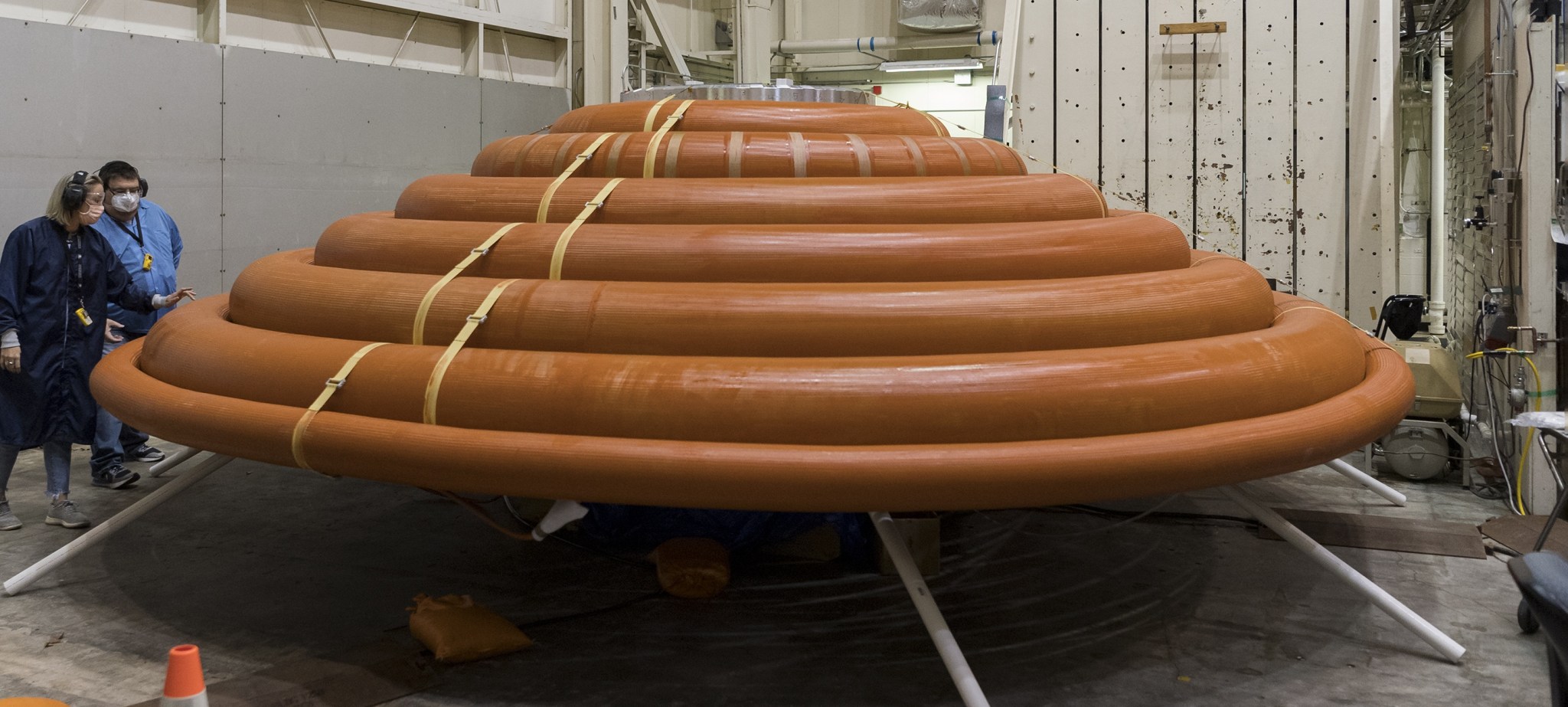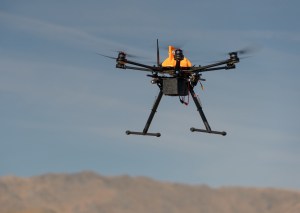A NASA technology that could one day help land humans on Mars is heading into final testing before a flight test later this year.
The Bernard Kutter Low-Earth Orbit Flight Test of an Inflatable Decelerator (LOFTID) is scheduled to launch with NOAA’s JPSS-2 polar-orbiting satellite in fall 2022. After hitching a ride to space aboard a United Launch Alliance Atlas V, LOFTID will inflate and then descend back to Earth from low-Earth orbit to demonstrate how the inflatable heat shield can slow down a vehicle to survive re-entry.
The LOFTID flight re-entry vehicle is comprised of several segments. The forward segment connects the inflatable heat shield to the inflation system; the mid-segment contains the interface to the rocket, along with critical power, control, and data acquisition electronics; and the aft, or rear, segment houses the ejectable data recorder, cameras, and the parachute system. All segments are now assembled, stacked, and ready for final environmental testing at NASA’s Langley Research Center in Hampton, Virginia.
At Langley, engineers will test the complete system to ensure LOFTID is flight ready. It will then be shipped to NASA’s Goddard Space Flight Center in Greenbelt, Maryland, for final acceptance testing before heading to Vandenberg Space Force Base in California for launch.
The LOFTID project is a part of the Technology Demonstration Missions program within NASA’s Space Technology Mission Directorate. The project is managed by Langley with contributions from NASA’s Ames Research Center in California’s Silicon Valley, NASA’s Marshall Space Flight Center in Huntsville, Alabama, and NASA’s Armstrong Flight Research Center in Edwards, California.

